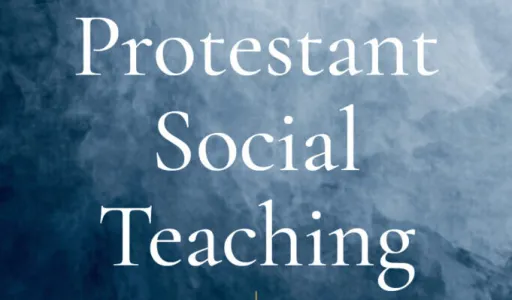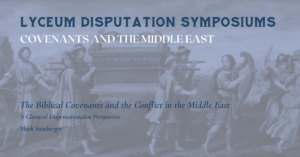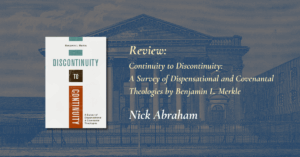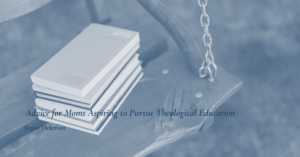Roberts, Alastair, Matthew Lee Anderson, Brad Littlejohn, John Wyatt, et al. Protestant Social Teaching: An Introduction. Landrum, SC: The Davenant Press, 2022. 248 pages. Softcover. 9781949716139. $26.95.
1. Introduction
The purpose of the Davenant Institute is to “Retrieve the riches of classical Protestantism to renew and build up the contemporary church.” Their latest edited volume, Protestant Social Teaching advances that aim by summarizing the wisdom of thinkers and theologians in the classical Protestant tradition on a wide range of social issues. The sources relied upon are much broader than the standard, well-known Protestant thinkers. By adopting this stance, the authors are able to set forth a broad array of opinions, showing the general consistency of the Protestant tradition, even while noting divergences of opinion within it.
2. Summary
There are several authors of the essays in this volume–some more well-known than others. Matthew Lee Anderson, Brad Littlejohn, and Alastair Roberts headline the more familiar authors. The following summary will be longer than typical to allow for expansion on the key points of each chapter.
2.1 Introduction
Steven Wedgeworth introduces the volume by noting that the title of the book itself is provocative. Unlike Catholic Social Teaching (CST), which has a more or less unified and official character and corpus, who can claim to speak for Protestants? Wedgeworth observes that Protestantism was more unified in the past: “[W]hile Protestantism will always have an inherent diversity, as its shape is more of a constellation of schools than a singular institution, it once had a remarkable unity on matters of moral theology” (iii). Consistent with this legacy, the book aims to “offer a unified body of social teaching not by way of creation but recovery” (iv). What are the sources of this Protestant social teaching? Wedgeworth offers a sampling: Baxter’s A Christian Directory, confessional catechisms and manuals, Ursinus’s Commentary on the Heidelberg Catechism, Ames’s Marrow of Theology, Chemnitz’s Examination of the Council of Trent, Blackstone’s Commentaries of the Laws of England, especially when read alongside Samuel von Pufendorf, Niels Hemmingsen and John Selden. Many readers will recognize some of these names, while others may be new or less familiar. That is one of the strengths of this book–it combines insights from a wide variety of Protestant thinkers, focusing on the foundational authorities. In this way, it attempts to present a solid foundation of Protestant insight in social and moral issues that Protestants of all varieties can build on as we face our contemporary challenges.
Wedgeworth’s definition of “Protestant” focuses on the shared core beliefs of Lutherans and Reformed (v). He claims that the label “Protestant” did not historically include Anabaptists, since they “viewed themselves as a refounding rather than reforming movement and who also had unique positions on anthropology and law” (v). According to Wedgeworth, the “‘Protestant Social Teaching’ of this book is a common understanding of the moral law, a shared exegesis of relevant biblical texts, and the continual reception of earlier Christian writers on the part of both Lutheran and Reformed theologians and statesmen” (vi). For the authors of this volume, “our Protestantism is resolutely catholic. We are attempting to uncover and pass along perennial and ecumenical Protestant truths” (vi). Further, “if we succeed in our task, many of the categories needed for such future essays will be uncovered by our work here” (vi). This is a key point to underscore–this book is not the final word on Protestant Teaching (PST hereafter). Rather, as the subtitle states, it is an “introduction.” It does not claim to be the last word, but it does a good deal of the spadework necessary to further develop a comprehensive, historically-grounded, Biblically-informed PST that is continually relevant.
Wedgeworth addresses the obvious question of how PST differs from CST (vi-vii)? PST does not claim to represent any type of magisterium. Rather, it “exists more like a common law, an ongoing but nevertheless ascertainable collection of consensual exegesis of the Scriptures and moral philosophy, a philosophy built upon Protestant principles” (vi-vii).
One of the guiding principles of the book’s approach concerns “natural law and original righteousness” (vii). Regarding natural law, Wedgeworth asserts: “A basic moral guidance can be discerned in virtue of humanity’s rational nature” (vii). Christ restores this in his people, and so PST does not posit some new morality, but rather, “it redirects [mankind] back to his own rational morality” (vii).
Wedgeworth concludes with the caveat that the essays focus on general areas of analysis, rather than striving for granularity in the details. The overall approach of the volume is then summarized as striving to “use the traditional interpretations and arguments [of the classical Protestant tradition] to more clearly highlight the content of God’s two books, the Holy Scriptures and the light of nature. As understood by its own articulators, Protestant Social Teaching is merely Christian Social Teaching” (viii).
I have dwelt at length on the Introduction because it summarizes the basic understanding and approach of the authors of these essays, and because the concept and phrase “Protestant Social Teaching” deserves elucidation. Protestants are used to arguing and disagreeing with each–we are less used to endeavoring to speak with a unified voice and any effort to do so needs to be clearly explained.
As far as the overall structure of the book, Part One covers “Law, Justice, and Punishment,” Part Two focuses on “Marriage, Life, and Death,” and Part Three treats the topics of “Property, Wealth, and Poverty.”
2.2 Part One – “Law, Justice, and Punishment”
E.J. Hutchinson’s “Law and the “Christian” presents a summary of various theologians on the subject of the law. Hutchinson’s treatment is a useful summary of many sources that are less well-known among Protestants but deserve to be given a more prominent place in our discourse. He distills the comments on the law from important theologians in the Lutheran tradition: Martin Luther, Philip Melanchthon (1497-1560), Martin Chemnitz (1522-1586), and Johan Gerhard (1582-1637).
He begins with Chemnitz’s six “semantic domains in which ‘law’ is found in Scripture,” to show the different ways the “law” functions in the Bible (2-3). He then draws on Gerhard to discuss the various distinctions and types of law, as revealed in Scripture and through natural law. He returns again to Chemnitz for seven “elements” of a “properly theological definition of the moral law” (11).
Hutchinson then focuses on Luther’s 1535 Galatians commentary, with additional help from Chemnitz and Gerhard to further expound on the uses of the law. Although this essay can feel overly nuanced, it should be a valuable resource for those working through issues of theonomy, or even “Christian Nationalism,” helping them to avoid simplistic conclusions.
Bradford Littlejohn continues this trajectory in his essay on “The Civil Magistrate.” Littlejohn cautions that, “Any attempts to read modern libertarian or statist paradigms onto the political theology of the sixteenth century are bound to lead us astray” (23). Even still, “in an age when political authority has become increasingly unmoored from any sense of accountability to an objective vision of the human good, the Reformers’ insistence on the divine mission and religious vocation of the magistrate will appear as a sharp rebuke to the secularized, bureaucratized modern ideal of ‘the government’ as manager of rival interests and manipulator of public opinion” (24). Littlejohn presents the Reformational vision of the magistrate and its calling in three sections. The first deals with the overall reverence and respect for the magistrate, as a God-ordained authority. Although the Reformers could praise magistrates as “fathers,” they also had plenty of experience dealing with sinful and deceitful civil rulers, and they had no qualms about rebuking them when needed. Bradford notes that they could do this because they distinguished the person from the office (26).
On the question of resistance to rulers, the Reformers did concede it could be necessary “under extreme circumstances” but it was “generally discouraged” (27). Littlejohn provides helpful context here: “After all, most sixteenth-century societies were always teetering on the brink of potential chaos in a way that is difficult for us to imagine today” (27). Littlejohn’s summary of how the magisterial reformers tackled issues of “social justice” in their culture is especially instructive for us in our current cultural moment.
In “Resistance and Rebellion” Glenn Moots presents the classical Protestant stance on the right to resist, or even rebel, against a government. Moots notes that the Reformers drew from a deep well of classical and medieval thought in this process (46). The “revolutionary” impulse within Protestantism is rooted in the conviction that obedience to God trumps all other claims and authorities, although classical Protestants insisted strongly on the duty to submit to our earthly rulers (49-50). Overall, Moots does a fine job of explaining the historical situatedness of the Reformers’ teachings on civil authority, while also making application to the present. He presents a cogent summary of the prudential and theological considerations that must be taken into account when confronted with a tyrant (or tyrannical government). I especially appreciate his reminder that the Reformers viewed tyrannical government as a “chastisement” from God and that “tyranny of any kind should drive Christians first to self-examination, prayer, and repentance” (61). Too many conservatives seem ready to rush into “resistance” mode, without having gone through “repentance.”
Marc LiVecche’s “Just War” is a carefully researched and nuanced treatment of just war theory, informed by the classical Protestant tradition as well as modern war theory. He surveys the development of the idea of a “just war” in early church thinkers, focusing on Augustine. Luther and Calvin are the main sources he deals with from the Reformation. He then interacts with modern and contemporary thinkers as he summarizes and explains the “two primary sets of criteria” that have developed in the just war tradition: “one pertaining to the justice of going to war in the first place (jus in bellum) and the other addressing justice in the course of fighting (jus in bello)” (72).
2.3 Part Two – “Marriage, Life, and Death”
In his chapter, “Procreation and Children,” Matthew Lee Anderson provides clear documentation that Protestants unequivocally rejected contraception prior to the Anglican 1930 Lambeth conference. If there is any aspect of PST that deserves the title of “consensus” this is it. Ironically, adopting the classical Protestant position on contraception might make some leery about edging closer to Rome, but that fear says more about what can sometimes be a typical Protestant response to distance ourselves from anything the Roman Catholic church teaches than about actual patristic and classical Protestant tradition of exegesis and practical teaching. Anderson forces us to ask an uncomfortable question–what happened to reverse such a near-unanimous opinion in the Protestant world? He does not attempt to answer this question in this essay, but he argues forcefully that “Protestant moral theology has proved incapable of resisting our increasing willingness to subordinate our fertility to a technological logic” (94).
Onsi Aaron Kamel and Alistair Roberts (“Sex, Marriage, and Divorce”) show how the Reformers built their theology of sex and marriage on the foundation of both the Scriptures, as well as on Augustine’s understanding of sexuality. They summarize how the Reformers recovered the Biblical teaching on the normative good of marriage for most people, rather than a substandard category for Christians who could not control themselves. However, they also note that the Reformers inherited Augustine’s ambivalence towards sexuality. They summarize, “For Augustine, the fundamental problem facing marriage after the Fall is the problem of the passions or ‘concupiscence’ (fallen desire)” (104). Additionally, in Augustine’s view, in a fallen world, “the lust inseparable from the sexual act, not marriage, was the necessary evil” (105). They continue: “In sum, St. Augustine carefully preserved both his capacity to reckon fully with humanity’s disordered sexual appetites and the good of marriage, family, and children. Many today find Augustine’s views distasteful, but the Reformers largely adopted them, not least because they believed them to be scriptural” (106; see also 109). I admit to being one of those skeptical of Augustine’s views. Is it really Biblical to assert that sex within marriage is always tainted by sinful lust? Did the Reformers fully embrace this aspect of Augustine’s thought? Kamel and Roberts do include a quote from Luther’s “The Estate of Marriage” to the effect that although “intercourse is never without sin … God excuses it by his grace because the estate of marriage is his work, and he preserves in and through the sin all the good which he has implanted and blessed in marriage” (114). Luther wrote this in 1522, which was before his own marriage. It would be interesting to compare all of Luther’s writings on marriage, to see if his views changed over time.
Despite my quibbles here, the chapter is a valuable piece on a crucially important battleground of our time. Their four-fold summary of the Reformers’ key teachings on marriage (110-112) is especially helpful.
Steven Wedgeworth tackles the topic of “Abortion” and argues that “From Protestantism’s inception in the sixteenth century until the middle of the twentieth, Protestant theologians and moralists maintained a consistent opposition to abortion. This witness was briefly lost, even in some surprising ecclesiastical contexts, until the 1973 Roe v. Wade U.S. Supreme Court decision shocked Protestant consciences” (115). He surveys some evidence from 20th-century evangelical theologians and denominations where abortion was not opposed categorically, which demonstrates that some conservatives were confused on this issue, with some even calling it a “Roman Catholic” issue (117). But this confusion betrayed their own theological heritage. To demonstrate this, Wedgeworth surveys evidence from Ancient Judaism, church history, and ends with the rapid abandonment of the Protestant consensus. He notes: “While that consensus would eventually break, the break was not a gradual outworking of Protestant principles but rather a violent one that rejected the prior tradition” (141).
John Wyatt’s “Death and Dying” is a fascinating study of both modern and pre-modern attitudes toward death, dying, and suicide. His brief history of the Christian roots of the modern palliative care movement was especially intriguing. Care for the sick and dying has always been a part of Christian social teaching (see my “Houses of Healing, Houses of Hope”) and this should stay at the forefront of PST in the wake of COVID-19.
2.4 Part Three – “Property, Wealth, and Poverty”
The contribution from Joseph Minich and Colin Redemer (“Work and Labor”) is an erudite and incisive treatment of both the theology and philosophy of work, politics, and economics, along with some practical suggestions for implementing PST in the realm of work and labor.
Eric G. Enlow’s “Private Property” is a philosophical discussion of the concept of private property. At times the dense prose obscures the topic at hand, but the overall effect is a creative exploration of the nature of private property–something we all take for granted but rarely stop to think about. Enlow’s insights into how the Bible limits the views of both classical liberalism and socialism on private property should be especially helpful in contemporary discussions.
Allen Calhoun treats “Taxation and Welfare” in a wide-ranging study that demonstrates the Protestant roots of assumptions that the government should be involved in the care of the poor and general welfare. This chapter will no doubt raise the hackles of many conservatives who decry the growth of “big government,” but his historical analysis is solid and it forces us to consider what a social order guided and informed by PST could, and should, look like. Calhoun provides succinct summaries of the social teachings of Lutheranism, the Reformed stream of influence, Abraham Kuyper, and the Anglican tradition.
Jake Meador’s “Environmental Care” is a balanced treatment of the dual commands to take dominion and also steward the earth. He draws especially on Martin Bucer, but also quotes Calvin on nature, to show that there are resources within the classical Protestant tradition to develop a robust theology of creation and stewardship. This is an important contribution since some conservative Protestants dismiss all discussions about environmental concerns as “liberal” or “politically correct.”
3. Evaluation
Overall, Protestant Social Teaching is a substantial work of scholarship that is also accessible to the average interested reader. The authors avoid theological and scholarly jargon, even as they tackle a wide range of challenging topics. Each chapter raises many questions, but any further discussions of PST should definitely build on this volume’s contributions and insights. This book should be of interest to a wide range of scholars because of the wide-ranging nature of contributions in this book. But pastors and concerned lay people would also benefit from this book. “Public theology” tends to drift into more liberal directions, and this book will help to anchor future discussions in the rich resources of the classical Protestant tradition.
4. Conclusion
This book should contribute to moving forward the discussion in all of the areas that it addresses. Additionally, it forces us to ask questions about our own versions of “Protestantism.” Do they run deep enough? Or do we cherry-pick our favorite authors from the past, while ignoring the rest? The authors of this volume demonstrate that there is indeed a common foundation of PST–one that should enable Protestants of all types to meet the challenges and opportunities of our times.
Editor’s Note: The London Lyceum seeks to publish book reviews by experts in their field of research for the purpose of inspiring thinking. Therefore, not all reviews and/or reviewers will hold to our confessional commitments. But as with all our work, we publish a range of viewpoints to encourage thinking.
Author
-

Dr. Gregory Soderberg teaches and mentors students of all ages at Kepler Education, the BibleMesh Institute, and Redemption Seminary. In addition to authoring chapters in two books, his study of communion frequency in the Reformed tradition was published by Vandenhoek & Ruprecht. He has written for Intellectual Takeout, SALVO, Common Good, and Touchstone, and posts regularly at The SoderBlurb.
View all posts




